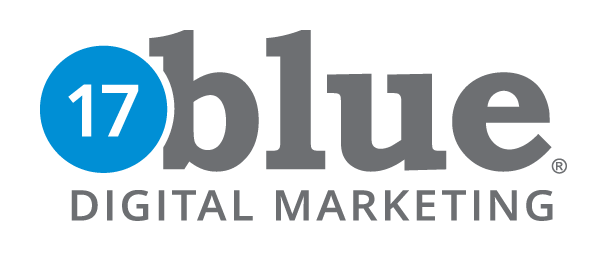In our last post, we highlighted “5 Ways to Market with Little or No Cash” and promised details in follow up installments. Here’s, part 2: Make the Most of Your Company Website.
Here are some basic steps to help you establish and make the most of your own website, without breaking the bank.
1. Make Sure You Have One!
It seems like we shouldn’t need to state it, but alas… there are businesses that still rely on the phone book. (Yes, really.) But by now, most businesses have realized that if customers can’t find you online, you are missing a large slice of pie in sales. It is estimated that about 75% of all consumers, and 90% of smart phone users, search for local services online regularly. If you haven’t already done so, you should begin creating your site and managing your online reputation.
If you can invest in a professionally developed site, then do. It will pay off as the hub of your marketing efforts and the face of your business online. It’s no secret that customers shop and “check you out” online. Make sure that your first impression is the best one you can make. But there are many free and low-cost DIY site options on the web today that can help you get started. A quick Google of “Site Builders” will provide you with a virtually endless list of options. Just be sure to READ the details.
Not every plan is the same. Know what is included, what you can edit and what you can control. For example, if your domain is free, they likely own it not you. This can create a major nightmare down the road when you have invested in marketing it only to find you are captive or you lose it. Do a little homework and save a lot of trouble later.
1. Put Your Site to Work for You!

Make your company website work for you… How? Start by making sure it is easy to navigate. When your customers are directed to your site, they should find immediate answers, products and a way to contact you. Don’t fall for flashy tricks that make navigation challenging… put it where customers can see it, understand it and use it without effort. Include relevant details and important information that will answer common consumer questions and direct users to purchase or contact options. Remember, you have 4-7 seconds to make an impression, so don’t waste that “front page real estate!”
Plan your site so it HELPS your business. Utilize online tools and functions to streamline communications and business functions. Your website should make your business life easier and increase leads/sales. Be careful to connect your “online” and “offline” business functions. In some cases, moving sales online is a key to increased reach, automation and profits. In some cases, developing online help or support for your customers can save you labor costs and provide 24-7 access to basic self-help tools or a support desk. Think before you build… plan the site to meet your goals.
2. Optimization: You Built It… but They Didn’t Come?
Make sure your website connects with your target customers, is optimized to be found easily in search results, and directs consumers to a desired action (usually buy, click or call).
Great marketing (online or off-line) starts with knowing your target. Think of marketing like shooting a bow and arrow at a bulls-eye. (Can you envision Robin Hood at the tournament?) Let’s say an arrow costs $5. If you are blind-folded, ear-plugged and shooting at random, you are going to hit a lot of trees, rocks, and other unintended marks… but the odds are very slim that you will hit the bulls-eye. And, all that “wasted” shooting is getting expensive.
But what happens when you know exactly what you’re aiming at, can see the mark and take time to aim? You get better results, and less energy and cash are expended in the process. If you can’t tell me who your “perfect customer” is, then you are not ready to aim with precision. And you are losing money.
Once you know who you are aiming for, you can make sure your message, marketing campaigns and other efforts are all designed to connect with that target. You may hit more than you aim for, but you will not be shooting blindly into the trees!
Optimize: There has been a cloud of mystery surrounding Search Engine Optimization (SEO) that many companies and “experts” have exploited. Many business operators are comfortable on a computer, but few have an understanding of the various parts of Search Optimization. This is a topic we’ll have to visit again in greater detail but let me say this here: It is NOT brain surgery or Newtonian physics! There are variables, but many unsuspecting (or uninformed) companies are sold expensive services that do not benefit them and in some sad cases actually hurt their online results.
If you have a site that you manage, check to ensure that the basics are in place before you spend money on additional services. Then work with a company you trust for more help.
- Content is (and always will be) King. Make sure your site has text that is relevant and helpful to your target customers. Include product details, common search phrases, and FAQ’s in NATURAL language. Do not stuff pages with keywords. That will hurt your rankings.
- Install Google Analytics and establish a base-line for traffic. If you don’t know what your site is doing before you advertise, how will you know if it improves?
- Make sure your principal pages have optimized Title Tags, Keywords/Phrases, and Description Tags. Google has a free Keyword Tool for help.
- List your business in free online directories, and other places where you can LINK BACK to your site’s content. Start with Google Places, and explore others that are free to begin with. NOTE: Always start with a search for your business first. If you find it, claim the listing – this avoids duplicate listings. Be sure to enter your company name, address, phone number and web address IDENTICALLY on all directories so they can cross-reference your information. You can employ a listing management solution to help.
- Don’t hide text in pictures. Use normal HTML text to allow easy search indexing. When you do use a photo, include Alternate Text to help search tools know what the picture contains.
- Always keep your desired customer action in mind. Use media that supports this purpose. Stay away from media for the sake of “coolness”. If it doesn’t support your goals, don’t use it.
- Get Social. Social media and email marketing are highly effective means of gaining leads, links and visibility. The purpose of social media is to provide a “more human” connection and to drive traffic to your site (not the other way around!).
Buy – Click – Call: It’s simple, but often overlooked. Just remember why you are pulling users to your website. Once they’re there, don’t forget to help drive the process. Provide clear navigation, easy to scan/read information, quick access options to important sections, and a call to action. Help the customer find the product, learn about the service or contact you easily. Make it simple, accessible and informative… you will win significant confidence points right there.
3. Be Consistent.
One of the worst things you can do is have a black business card, a blue website, a red phone book ad and green vehicle lettering. Mixed messages mean you have to work harder and spend more money to be recognized and gain consumer confidence. You don’t have to be a graphic artist to be prepared and consistent. Make all of your company’s main branding items and marketing consistent. The smaller/newer the company, the more strictly this rule applies.
Let’s face it… you’re going to recognize the Nike “swish” or McDonald’s “Golden Arches” in any size or color. But for the small business that is trying to establish and grow a client base, consistency is key. The brands that have national, instant recognition have spent millions establishing it. If you don’t have millions, you need consistency! Your customers will appreciate being able to recognize you and you’ll get more bang out of your buck!
Start simple… use the same logo and font. Use the same color scheme. Use the same (good, targeted) marketing message. Get it out there consistently and it will begin to work for you.
(Read Part 3 of the series: Email Marketing that Works)






